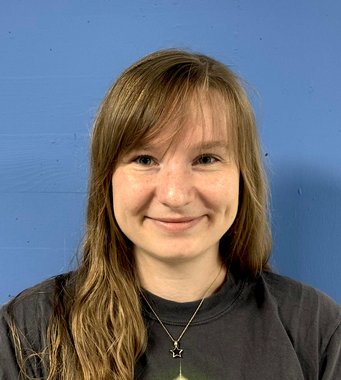Minerva Fast Track Fellowship for Eva-Maria Ahrer
Eva-Maria Ahrer, postdoctoral researcher at the Atmospheric Physics of Exoplanets (APEx) department headed by Laura Kreidberg at MPIA in Heidelberg, has been awarded a Minerva Fast Track Fellowship by the Max Planck Society. Starting in January 2026, this will allow the scientist to establish her own research group dedicated to investigating the diversity and formation history of exoplanets.

Observing planets around other stars is one of the greatest challenges in modern astrophysics. It was not until 1995 that the first of these so-called exoplanets was discovered around a sun-like star. They are outshined by their parent stars by orders of magnitude and, due to their enormous distances from Earth, have only a tiny angular distance from their stars. Thus, over 90 percent of the approximately 6,000 exoplanets known to date have been discovered indirectly—for example, through their gravitational influence on the movement of their parent star or through so-called transit observations. During transits, a planet passes in front of its parent star as seen from earth and dims its brightness.
Today, 30 years later, the largest ground-based telescopes, such as those of the European Southern Observatory (ESO) in Chile and, above all, the James Webb Space Telescope (JWST), are opening up completely new possibilities that Eva-Maria Ahrer wants to utilize in her research project "Understanding the diversity and formation history of exoplanets in the JWST era." Eva-Maria Ahrer plans to investigate the atmospheres of exoplanets with her new research group. This includes not only studying climatic conditions and cloud structures, but also their chemical composition. The MPIA is directly involved in both the ESO telescopes and the JWST through instrument contributions and many other scientific projects.
The method that Eva-Maria Ahrer will use is based on the transits mentioned above and is therefore referred to as transit or transmission spectroscopy.

"There are exoplanetary systems where we look directly toward the plane in which the planets orbit their parent star. This regularly results in transits of a planet in front of the star—similar to how we can occasionally see the inner planets Mercury and Venus pass in front of the Sun from Earth. During such transits, not only is there a characteristic dimming of the starlight caused by the planet in the line of sight, but the parent star also shines through the planet's atmosphere. It is precisely this light that I want to study. If you know the properties of the unaltered starlight, you can measure many properties of the planet's atmosphere from the differences," says Eva-Maria Ahrer.
The differences are revealed in the spectrum of light. A spectrum is created when light is split into its individual colors or wavelengths. At high enough resolution, characteristic absorption lines and bands appear in the spectrum, which are caused by molecules and atoms – i.e., in the planet's atmosphere. Like a fingerprint, this allows not only the composition to be determined, but also many other physical parameters that describe the conditions on site.
With her project, Eva-Maria Ahrer aims to address some key questions in exoplanet research: Where and how do these planets form? How diverse are planets and their atmospheres? What are they made of and what are the local conditions?
To achieve this goal, various types of exoplanets will be studied, including those previously unknown in our own planetary system. These include so-called hot Jupiters, gas planets similar to our Jupiter, but located relatively close to their parent star and which are therefore much hotter. But also Neptune-like planets, which are cooler, and even rocky planets such as the so-called super-Earths. The latter are more massive and larger than Earth, but could otherwise have similar properties.
The project thus touches on one of the central questions of our time: Are there other planets in our universe where the conditions are just right such that life can be supported? Evidence for this can almost exclusively be provided by successful observations of planetary atmospheres.
Eva-Maria Ahrer has already successfully secured observation time on ESO telescopes and the JWST for her project. The latter is particularly important when it comes to measuring signatures in exoplanet atmospheres that only reveal themselves at infrared wavelengths. This is precisely where the JWST's strengths lie.
Funding for the new research group will begin in January 2026 and is scheduled to run for four years.
In addition to Eva-Maria Ahrer, the Minerva group is expected to consist of at least a postdoctoral researcher and a doctoral student.
The Minerva Fast Track Program of the Max Planck Society offers outstanding female scientists the opportunity for long-term career planning after their doctorate. It was initially introduced in 2014 in the MPG sections Chemistry, Physics, and Engineering as a building block for increasing the proportion of women in scientific leadership positions while maintaining the highest quality standards.
MINERVA Fast Track - Program of the Max Planck Society
KJ/EMA

